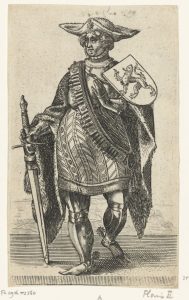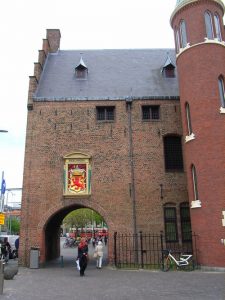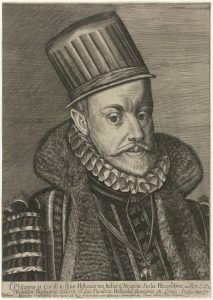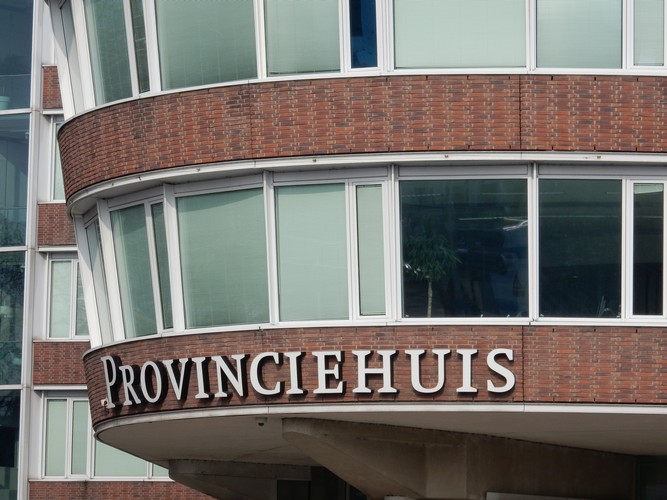When I was in school I wrote my name on every fresh notebook. And often also a series of “addresses”: the place where I lived, the province, the Netherlands, Europe, The World ….. I now live in the province of Zuid-Holland and it is time for me to take a look into the origins of this province.
County of Holland
Around the year 800 Europe was ruled by Charlemagne. His “Holy Roman” empire was so large that he needed local administrators. A count was such a representative of the monarch. In 1101 a certain Floris II, whose ancestors had been known as counts of West Frisia, received for the first time the title “comes de Hollant” (Count of Holland). The coat of arms of the County of Holland was the red lion.
The last Count of Holland was Philip II (1527 – 1598), who had many more titles, among them Duke of Brabant, Duke of Gelre, and Count of Flanders. Most important, Philip was also the King of Spain. The inhabitants of Holland and other Dutch provinces then under Philip’s control disliked the way he ruled and his persecution of Protestants. So in 1568 they began what was later called the Dutch Revolt.
Dutch Republic
The battle against against Philip II and his successors lasted 80 years. At last in 1648 the Republic of the Seven United Netherlands was recognized. In this republic Holland was the most powerful province and was ruled by the States of Holland who met in The Hague. Delegates from 18 cities regularly came to our city to consult and make decisions.
‘French - Batavian’ era
In 1795 the Republic of the Seven United Netherlands saw another revolt, known as the Batavian Revolution. The control by the 18 Dutch cities was abolished and Holland was divided into 55 constituencies in which people could elect one delegate. However this period of what you may call democracy didn’t last long. In France Napoleon Bonaparte came to power, eventually extending his regime to the Netherlands. In 1807 Holland was divided into 2 departments: the Amstelland department with the capital at Haarlem, and Maasland with The Hague as its capital. Maasland was later renamed the “Département de Bouches de la Meuse” (= department of the Meuse estuary). The governance of the other Netherland provinces was similarly reorganised.
Standardisation
Across these new administrative divisions, Napoleon imposed various standards to eliminate certain differences among the regions. Over centuries, the various counties and then provinces had developed their own systems of weights and measures, and of currencies. Napoleon devised a unified system for all these units. In 1811 he also introduced the civil registry. Births, marriages and deaths had to be registered at the town hall.
Kingdom of the Netherlands
In 1815 Napoleon was defeated and William I became king of the Kingdom of the Netherlands. In this Kingdom the independence of the provinces was not restored. Holland became one province, but with 2 governors. In 1840 came the final split into the provinces of Noord- and Zuid-Holland which we know today. Zuid-Holland ‘inherited’ the red lion, which it could include in in the provincial coat of arms and in the provincial flag.
What happens there is less known to many of these residents. On the website www.zuid-holland.eu you will find topics such as space, traffic and transport, energy, safety. And local government, because the provinces are by law appointed to monitor the municipalities.
Once every 4 years the Dutch have the opportunity to elect the members of their provincial council. A good reason to take a moment to reflect on our province of Zuid-Holland.
Would you like to learn more about government and elections in The Netherlands? Invite family and friends to a city walk through The Hague.
* Collection Rijksmuseum










